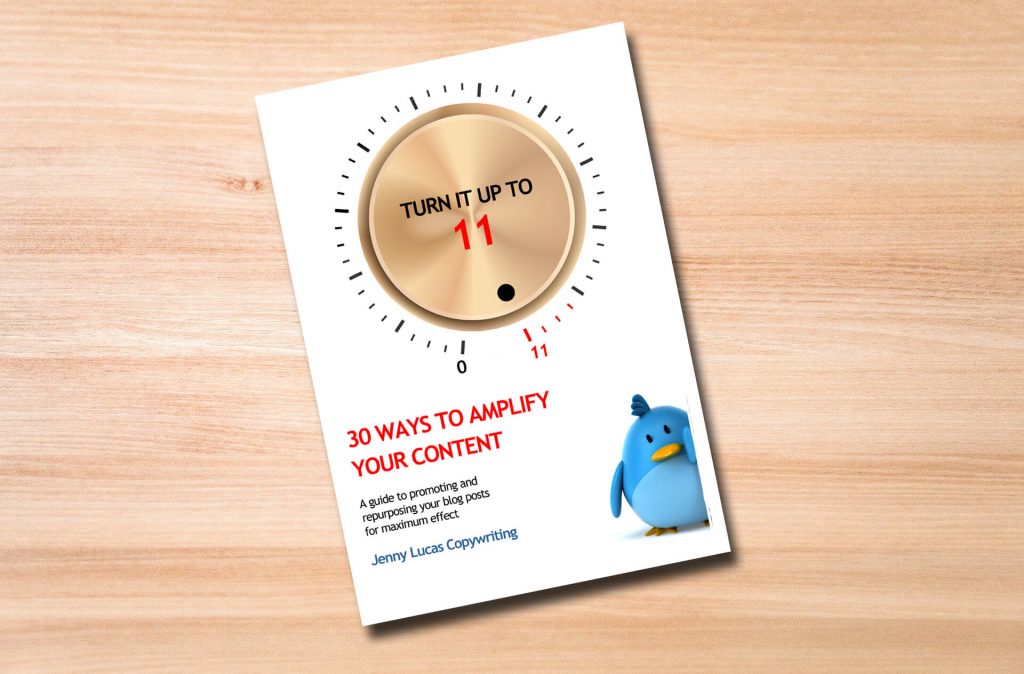UPDATED JANUARY 25, 2024
What can I tell you about content?
Well, let’s see… I’ve been writing and ranking blog content for the last 15 years. For my last employer, for my own business and for countless clients I’ve worked with as a freelance content writer. And I’ve made it pay.
Most things I know about content, I’ve learned from my own experience.
Content marketing is something I truly believe in, because it makes good sense, it’s effective and it delivers results. But there are so many myths and misconceptions about it — from what content is, to how much you need and how to measure its success.
So let’s go bust some myths and uncover the truth about content marketing.
What’s the point of content marketing?
Let’s start by looking at some of the myths around why you need content and why it’s such a good investment.

Myth #1. Content is just for SEO
This is a myth peddled by some SEOs who are purely concerned with getting their clients’ websites to rank on Google and bringing in more traffic.
The thing is, while blog content is good for SEO, will help your website rank for more keywords, and will attract more traffic, this is only part of a successful content strategy.
Getting traffic to your website is just the beginning. You should be more concerned with what happens when that traffic lands on your website. And that’s more about your human audience than it is about SEO.
Traffic = discerning human visitors
Traffic isn’t just numbers. It represents the people who’ve come to your website in search of something and are expecting to find it.
An article that’s been written purely for SEO is unlikely to have the necessary customer focus or give them the answers and information they need.
The content you’re putting out there should include the SEO that will bring traffic to your site. But it should be written for your human visitors, because they’re the ones with the money!
Myth #2. Content marketing is the same as advertising
When content marketing first became a thing, it was touted as a new approach to advertising. But it’s not advertising in the conventional sense and there are several important differences.
Content marketing brings your audience to you
Advertising involves placing ads where your ideal customers will see them and persuading them to click the link to your landing page.
Content marketing involves creating content that will help and benefit your audience, so they actively seek it out.
Content marketing is more sustainable
Advertising is only sustainable while you’re funding it. When you stop paying, your ads will stop and so will your revenue stream.
Content is yours forever. It creates a valuable resource on your website and can stay there, attracting visitors, for as long as it’s relevant and still has value. The more high-quality content you add, the more valuable your resource becomes. This makes it a more sustainable way to continuously generate new business in the long term.
Content marketing is a long-term strategy
Advertising uses paid promotions to help you reach a large audience quickly. The aim is solely to generate sales and leads for your business and you should see results quickly.
Content is a long-term strategy, where you create and distribute valuable content to build and nurture an audience of your ideal prospects. The aim is to promote your authority in your sector, build trust with your audience and, eventually, convert those prospects into loyal customers.
Content marketing inevitably takes longer to yield results, but the results will be worth waiting for.
Content marketing gives you more control
Advertising involves post ads on third-party platforms, like search engines and social media. To post, you have to abide by their terms and follow their rules.
With content marketing, you’re publishing content on your own website which gives you more control and more freedom to publish what you wish.
Content is more like an antidote to advertising
Advertising is everywhere. On our TVs and radios, in our streets, on our roads, through our letterboxes, in our inboxes, on our socials, in our search results and on the websites we visit. It’s relentless.
Some of us are exposed to hundreds of adverts every day. But we’ve become pretty adept at ignoring and avoiding them — assisted by ad blockers, delete keys and skip buttons.
Content, on the other hand, is something we actually want to consume — and that may be the biggest difference.
Myth #3. My content should be all about my business
It’s your content, so surely you should be using it to talk about your business, right?
Wrong.
The genius of effective content is that it drives traffic to your website by pulling people in. But it only works if your audience is actively looking for the content you’re creating.
For example, your audience might be searching for ‘How to unblock a toilet’, but they’re unlikely to be searching for ‘We’ve unblocked 500 toilets this year’. See the difference?
When you’re planning your content, you need to be thinking about what benefits your audience and what’s going to bring them in.
Myth #4. Content marketing is all about sales
Content marketing is ultimately about generating new business — of course it is. Nobody would bother investing in it if they weren’t going to see some returns.
But the main goal of content marketing is not sales. It’s to benefit your audience by giving them the help, information, advice or inspiration they’re searching for.
Content actually has a whole range of objectives, such as:
- Demonstrating your knowledge and expertise
- Increasing the authority of your brand
- Building your audience’s trust and loyalty
- Introducing your brand to new people
- Attracting warm leads to your website
- Getting new email sign-ups.
You might, occasionally, create a piece of content that’s intended to drive sales. But this would be an exception rather than the norm.
Content strategy
If you’re creating content, you need a strategy. This will help ensure you’re targeting the right people, in the right way to get the best results.
Your strategy should take into account your products/services, audience, media channels and platforms. Plus the amplification and promotion of your content.

Myth #5. A content strategy is a waste of time
An SEO told our mutual client that putting together a content strategy was a waste of time and I should just be targeting the list of keywords they’d provided.
But they were wrong. Because content marketing is about so much more than just SEO, targeting keywords and focusing on traffic (see Myth #1).
A content strategy helps you set out a proper framework and clear direction for your content.
It helps you determine:
- Which markets you need to target
- The content you need for different audiences with different awareness levels
- The key messages you want to get across
- The media you want to use and how you plan to promote it
- The results you’re looking for.
A content strategy helps to focus your efforts and make sure you’re getting the most from your marketing investment. Without one, you could be wasting money and not getting the results you deserve.
Myth #6. My industry is too boring for content
Some prospects tell me what they do is so boring, if they created content for their website, no one would bother to look at it. But they were wrong.
A quick search on Google was all it took to prove:
- Their audience had questions — lots of them
- The questions were being Googled — lots of times
- Their competitors had content — lots of it.
And they were missing out on valuable traffic by not creating the content their audience wanted to see.
Remember that content is subjective. What’s boring to you will be engrossing and enlightening to someone who needs it. And a good content creator will know how to make it interesting and engaging for your audience.
Myth #7. Written content is all you need
Written content still works best for SEO, because search engines are trained to ‘read’ and make sense of written words.
But not everyone wants to sit down and read an article. Some people find reading difficult, some don’t have the patience and some prefer other ways of consuming information.
For example, some people would rather:
- Watch a video
- Listen to a podcast
- Read an ebook
- Look at a graphic
- View a SlideShare.
Repurposing your blog articles into other forms of content, like these, will help you reach and engage a larger audience.
Myth #8. Posting more frequently gets better results
I recently saw a content writing opportunity where the client wanted to hire one writer to publish four 600-word articles on his website every day.
Yes, you read that correctly.
Posting lots and lots of articles is one way to build up your blog. But quality and consistency are so much more important than quantity. One in-depth 2,400-word article will serve you better than four 600-word articles.
You should be aiming to post consistently high-value SEO content with consistent regularity. One exceptional article a month is better than four mediocre articles a day. And posting weekly is a better option if you’re trying to get your website to rank.
Myth #9. Longer word counts get better results
Longer and more in-depth content does tend to perform better on Google. But a longer word count alone does not automatically mean a piece of content will get you better results. In many cases, all it means is that the piece has been written to meet a given word count.
It’s much better to write something of quality and value that’s a proportionate length for the subject than to hold out for something longer. Because writers who have to meet word counts often resort to wordiness, waffle, and rambling off on tangents that aren’t really relevant.
Posting high-value content that delivers what it promises is more important than the length. This is why I don’t work on word counts. I write until I’ve covered the topic in sufficient detail — then I stop.
The process of creating content
In this section, we’ll look at how your content gets written and who should be writing it. This matters, because content that’s written on the cheap will, without doubt, be missing the elements it needs to make it successful.

Myth #10. Anyone can write my content
Anyone can write, right? I mean, most of us learned it in school, so how hard can it be?
The thing is, there’s actually a big difference between someone who can string a sentence together and someone who can write effective content that satisfies an audience and satisfies Google.
Because for your content to work properly it needs to:
- Show you understand your audience and what they want to see
- Include credible research to back up what you’re saying
- Communicate with your audience in a clear and meaningful way
- Stand a chance of ranking on Google so your audience can find it.
These are skills that often take years to master. And they’re probably not skills your work experience person or marketing junior will have.
So, can anyone write your content? Yes. Can anyone write your content in the way it needs to be written? No.
Myth #11. AI will solve all my content problems
There are currently AI ‘content writers’ popping up everywhere and rattling off ‘content’ for ridiculously low rates. But if you’re thinking those AI ‘writers’ are the answer to all your content writing prayers, you might want to think again.
First, AI doesn’t have any ideas of its own and it can’t do anything without human instruction. So you’ll need a human content strategist to tell it what to write.
Second, AI doesn’t research well. It can’t distinguish credible or original sources, so it takes from any old article it can find. And I mean old. In an experiment I did, some of the sources were more than five years’ old and none of them were official. But it doesn’t end there, because any points AI makes using flawed sources will be flawed too. So you’ll need a human to fact-check and fix all that.
Third, AI writes like a machine and people ridicule its work. So if you don’t want to sound like a machine or be the butt of people’s jokes, you’ll need a content writer to humanise it for you.
Shall I go on?
In truth, there are so many reasons why AI won’t solve all your problems. And if you think this is a shortcut to getting cheaper content, you can think again on that too.
Fact-checking and rewriting incoherent AI ramblings, sourced from god knows where, is no fun and it can take longer than researching and writing it from scratch. Any content writer who agrees to fix it for you should be charging more than their normal rate, not working at a discount!
Publishing and tracking content
In this section we’ll look at what happens when the content is written — because, contrary to popular belief, that’s not the end of the story.

Myth #12. Content takes too long to take effect
Some business owners don’t have time for content. They say it takes too long to work and they prefer advertising because it shows instant results.
This may be the case if you hit publish then don’t do anything else. But if you amplify and promote your content, it can reach your audience quickly and take effect sooner.
If you have an established website, your content can start ranking quickly too. Pieces of my own content have reached Google’s number one spot in a mere matter of days.
Myth #13. Publishing the content is the final stage
Some clients hit ‘publish’ on their content, then sit back and wait for their audience to come and find it. But they inevitably find themselves waiting a while.
What they should be doing is promoting it to the audiences they have on their social media and email lists.
To reach the most people, you should be sharing your content on your socials at different times and on different days. Keep a check on your account and respond to any comments to amplify your reach even further.
You can share the link with your email subscribers, too. And include a share button in the email, so they can share it with other members of their network, if they choose.
Promoting and amplifying your content like this will get people engaging from the start, so you won’t have to wait for it to start working.
Myth #14. The success of your content is in the sales
The sole goal of conventional advertising is to sell. This means you can evaluate the success of a conventional advertising campaign by how many sales it made.
But the effects of content are more difficult to measure. And it’s virtually impossible to attribute a sale to a particular piece of content.
For example, a piece of content might encourage someone to sign up to your email list. But it could be days, weeks, months or even years before that person decides to buy something from you.
The point is, you’re on their radar when they’re ready. And in the meantime, you’re on their radar if anyone they know needs a recommendation.
But just because your content isn’t translating directly into sales doesn’t mean it isn’t working. Behind the scenes, it’s:
- Boosting awareness of your brand and introduce you to new customers
- Showing your expertise and build trust in your brand
- Encouraging visitors to sign up to your mailing list, so you can target them with email marketing
- Pointing visitors in the direction of more information.
Want to start a business blog?
Or to improve the blog you already have?
I’m Jenny Lucas, a UK freelance copywriter with a wealth of content writing experience.
I work with SMEs to create content that helps attract visitors, build an audience and convert new business. It’s a process that’s worked for me and many of my clients — and it could work for you, too.
For more information, have a look at my content writing service page or complete a contact form to get in touch.

You might also like…



